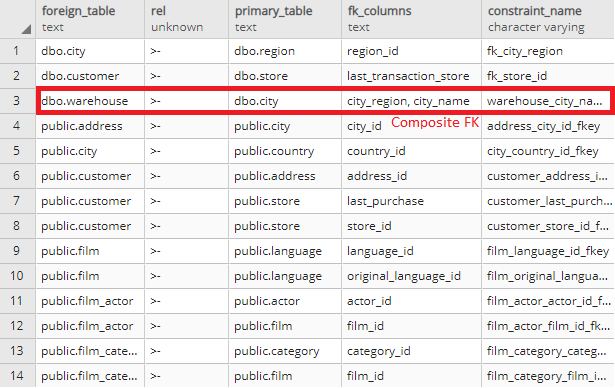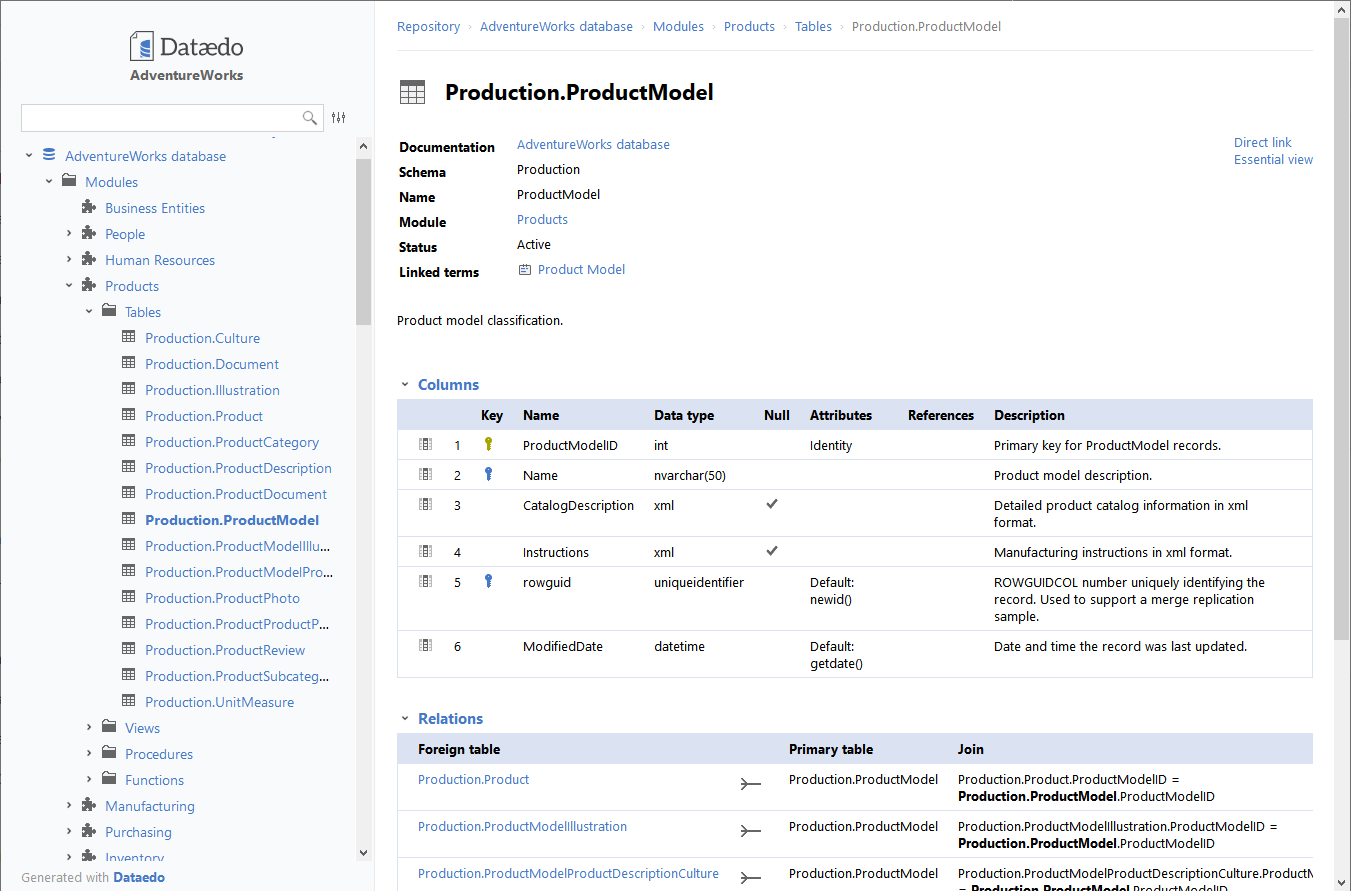Query below returns foreign key constrants defined in a database.
Query
select kcu.table_schema || '.' ||kcu.table_name as foreign_table,
'>-' as rel,
rel_tco.table_schema || '.' || rel_tco.table_name as primary_table,
string_agg(kcu.column_name, ', ') as fk_columns,
kcu.constraint_name
from information_schema.table_constraints tco
join information_schema.key_column_usage kcu
on tco.constraint_schema = kcu.constraint_schema
and tco.constraint_name = kcu.constraint_name
join information_schema.referential_constraints rco
on tco.constraint_schema = rco.constraint_schema
and tco.constraint_name = rco.constraint_name
join information_schema.table_constraints rel_tco
on rco.unique_constraint_schema = rel_tco.constraint_schema
and rco.unique_constraint_name = rel_tco.constraint_name
where tco.constraint_type = 'FOREIGN KEY'
group by kcu.table_schema,
kcu.table_name,
rel_tco.table_name,
rel_tco.table_schema,
kcu.constraint_name
order by kcu.table_schema,
kcu.table_name;
Columns
- foreign_table - foreign table schema and name
- rel - relationship symbol implicating direction
- primary_table - primary (rerefenced) table schema and name
- fk_columns - list of FK colum names, separated with ","
- constraint_name - foreign key constraint name
Rows
- One row represents one foreign key. If foreign key consists of multiple columns (composite key) it is still represented as one row.
- Scope of rows: all foregin keys in a database
- Ordered by foreign table schema name and table name
Sample results
Foreign keys in our pagila database:

You could also get this
Get this interactive HTML data dictionary in minutes with Dataedo.












 Bart Gawrych
Bart Gawrych